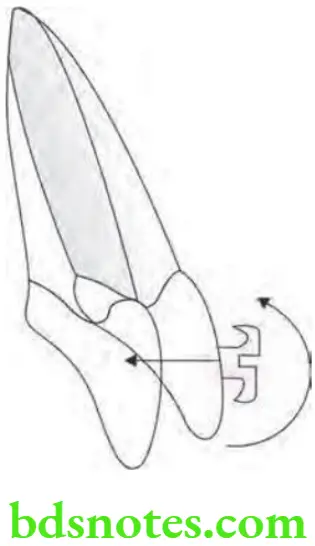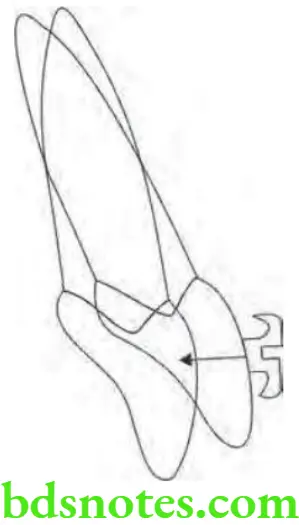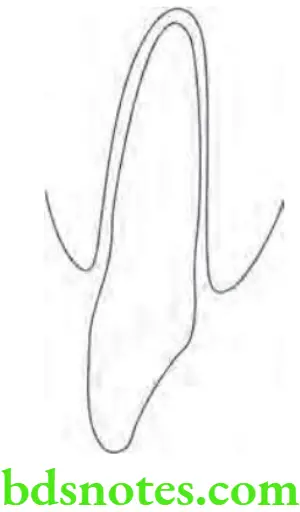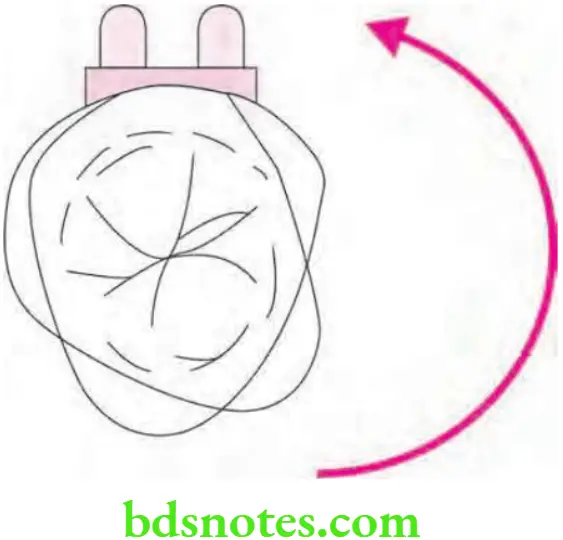Mechanics Of Orthodontic Tooth Movement
Question 1. Write short note on Bodily tooth movement.
Answer. Bodily tooth movement is the most desirable type of tooth movement.
- When both, the crown and root, move in same direction i.e. either in lingual direction or in labial direction, this is known as bodily movement.
- Force applied for bodily movement is 70 to 120 g and center of rotation is at infinity.
- On periodontal ligament uniform stress pattern is applied.

Read And Learn More: Orthodontics Question And Answers
Question 2. Write short note on different types of tooth movements.
Or
Write short note on various types of tooth movement.
Answer. Following are the different types of tooth movements, i.e. tipping, translation, root movement and rotation.
Tipping
Tipping is the simplest from among the tooth movements.
- In tipping type of tooth movement crown moves more as compared to root.
- It is of two types, i.e. controlled tipping and uncontrolled tipping.
Controlled Tipping
- In controlled tipping, movement of crown occur in single direction while the root shows no movement in opposite direction.

- Center of rotation lies at apices of root.
- In this force required is 35 to 60 g.
- The moment to force ratio is in the ratio of 7:1.
- PDL is stressed very less at root apex. Due to this root movement is prevented.
- In cervical area stress pattern is more.
- It is used when the excess proclined incisors are to be retracted and roots are at normal position.
Uncontrolled Tipping
- It is done when a single force application is applied to crown of tooth.
- In this crown move in single direction while the root in another or opposite direction.
- Center of rotation lies between center of resistance and root apex.
- PDL is stressed at near to root apex over same side of applied force and at crest of alveolar bone over opposite side.
- It is used when proclination of incisors is carried out.

Translation
In translation two forces are applied to the crown of tooth.
- As translation tooth movement is applied, crown and root move in same direction at same distance.
- Forces applied passes through the center of resistance of a tooth.
- Pure translation is of three types:
- Intrusion.
- Extrusion.
- Bodily tooth movement
Intrusion
- Intrusion is the bodily displacement of a tooth along its long axis in an apical direction.
- Intrusion tooth movement needs minimum force application.
- Force required for intrusion is 10 to 20 g.
- Force applied passes via center of resistance.
- PDL present in the apex get compressed at a small area.
- Areas of tension are absent.

Extrusion
- Extrusion is the bodily displacement of a tooth along its long axis in an occlusal direction.
- Force required for extrusion is 35 to 60 g.
- PDL present in the apex shows stretched areas.

Root Movement
- It is the opposite of crown tipping and crown of a tooth should be kept stationary, while the root moves labiolingually or mesiodistally.
- Root movement occurs due to torquing of the incisor and uprighting the tipped teeth.
- Two types of root movements are present i.e.
- Torque: It leads to labiolingual movement of root.
- Uprighting: It leads to mesiodistal movement of root with center of rotation at incisal edge. Usually 50 to 100 g of force is required. Here stress is greatest at apex and decreases gradually to cervical level.

Rotation
- Rotation is defied as spinning of tooth at its long axis.
- It is gained by using a couple.
- Forces become null and momentum remains which causes rotation.
- Force required is 35 to 60 g.
- In cases where correction is done by rotation chances of relapse are too many.
- Rotation is gained by the help of couple force or by the help of single force and stop.
- Pure rotation is divided into two types i.e.
- Transverse rotation: Tooth displacements during which the long axis orientation changes is called as transverse rotation. Examples are tipping and torquing
- Long axis rotation: In this the angulation of long axis is not altered. Example is rotation of tooth around its own axis.
- Generalized rotation: Any of the movement which is not pure translation or rotation can be described as the combination of both translation and rotation and is known as generalized rotation. This movement is seen in routine clinical practice.


Leave a Reply